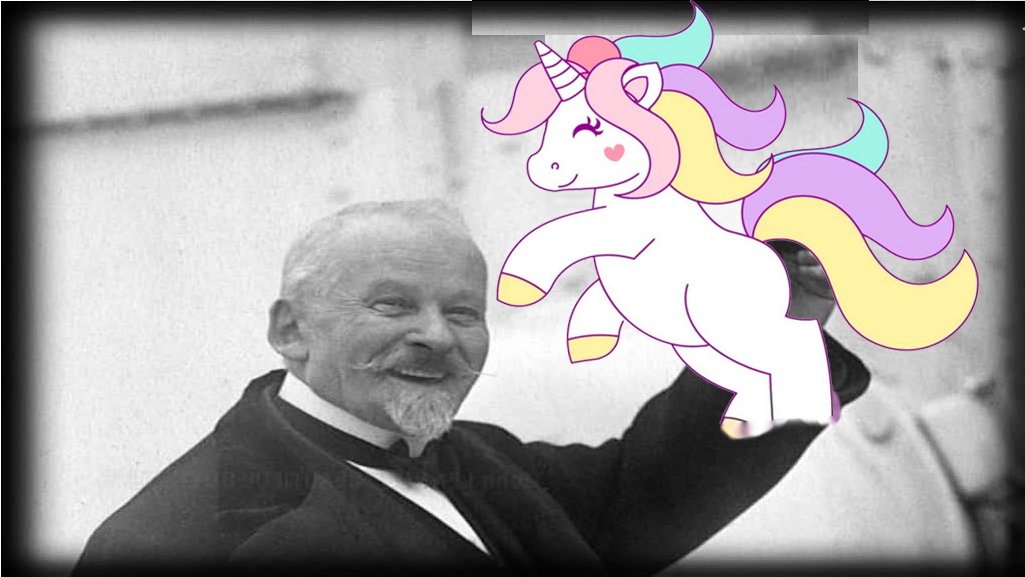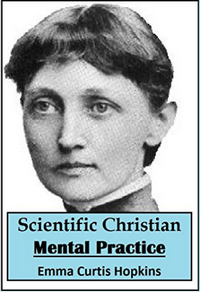

Accentuate the Rational,
Eliminate the Woo-woo
 |
| Have you read any of these books? Please add a review or comment or question in the form at the bottom. Thanks! |
The title of the song Accentuate the Positive was inspired by a sermon with a similar title–Accentuate the Positive and Eliminate the Negative–given years earlier by a famous preacher called Father Divine. Divine was a prominent black spiritual leader of the 1930s, and a part of the New Thought Movement which I will discuss later in this piece. The Peace Mission–the depression-era organization Divine founded–was originally dismissed as a cult, but it still exists and is now generally hailed as an important precursor of the Civil Rights Movement.
I often write to give so called “positive thinking” a deservedly hard time, not just because it deserves it, but because the issue is important. Perhaps a little positive thinking can be a little bit helpful for a little while, but in its most absurd form, positive thinking tries to make things happen by thinking about them, by willing them to happen. As Robert T. Carroll of Skeptic’s Dictionary (skepcdic.com) points out
I agree with Carroll’s words as well as his skeptical sentiments. While many vehemently disagree insisting that positive thinking can indeed cure cancer, there simply is no persuasive evidence that “thinking makes it so.” Sorry to be the one to tell you. This is an issue important to REBT because REBT after all supports rational thinking, rational emoting and rational behaving, and thus is inherently antagonistic toward wishful thinking and superstition. This is more than an academic issue because, let’s call it, the “woo-woo” version of positive thinking can be more than just silly and insipid, it can be cruel, toxic, self-defeating. It can be especially cruel when victims choose to or are persuaded to feel guilty and inadequate when the woo-woo doesn’t cure their cancer.
Moreover, it seems likely that human beings have an inbred tendency to be credulous, gullible and superstitious. While this quality–along with our myriad cognitive biases–may have had evolutionary advantages, it is certainly no longer useful in modern societies.
There is another reason that this is one of my perineal subjects. People with the most casual and superficial understanding of REBT-CBT often knee-jerk dismiss it as “just another form of positive thinking.” Nothing could be further from the truth, and I guess we are going to have to keep refuting this distortion and reminding people about the difference between REBT-CBT and positive thinking. At the same time, we also want to continue to emphasize that REBT-CBT does not support negative thinking, and that indeed being stuck in chronic negativity and pessimism is one of the main features of clinical depression.
However, this may not be obvious to those with a “sensitive” disposition who automatically equate being realistic with being negative. As you can see, it can be tricky to unpack this tangled issue because while it is easy to ridicule the famous positive thinking affirmation “Every day in every way I am getting better and better!” no one would suggest that “negative thinking” is the path to health, wealth and happiness; not by a longshot! Admittedly, woo-woo affirmations may feel empowering and motivating for awhile, the effect is usually short-lived. To put it in quaint terms, you tell your subconscious “Every day in every way, I am getting better and better” and sooner or later your subconscious gives you the raspberries, and pushes back “Oh, no you’re not, buddy!”
| In case you have forgotten what giving someone the “raspberries” means, here is a demo, |
So, what we are aiming at here is to encourage people to distinguish between woo-woo positive thinking and, lets say, healthy positive thinking and rational optimism, to embrace the philosophical value that reality–even when it sucks–is better than fantasy, and that realistic thinking is superior to wishful thinking.
But what exactly is positive thinking, what are its origins and how did it come to feature so prominently in modern culture, especially in American culture? Lets have a brief look.
Émile Coué in the 1921 book Self-mastery through Conscious Autosuggestion introduced a form of self-hypnosis into the culture called “autoconditioning.” As a tool, it still has relevance and value if you keep it realistic and rational.

Émile Coué (1857-1926) French psychologist and pharmacist who introduced a popular method of psychotherapy and self-improvement based on optimistic autosuggestion. Most noted for the familiar positive thinking affirmation “Every day in every way, I am getting better and better.”
As of this writing, a google search for “positive thinking” returns nearly one billion hits! If you are a skeptic and rational thinker, it may seem astounding that in the 21st Century, there are still vast numbers of people who believe deeply that woo-woo thinking will bring health, wealth and happiness. It may seem even more astounding when you consider that some or many of these same believers remain stubbornly stuck in illness, poverty and misery! Perhaps this is a cousin to the same flimsy false hope that keeps people buying and buying and buying lottery tickets.
 |
 |
 |
 |
|
Although Norman Vincent Peale The Power of Positive Thinking came along a little later in 1952, he gets “bragging rights” for introducing the term “positive thinking” into the popular culture years earlier, and making it a household phrase. The huge hit song Accentuate the Positive by Harold Arlen and the lyrics by Johnny Mercer further demonstrates how popular this idea was. The song was nominated for the “Academy Award for Best Original Song” 1945 after being used in the film Here Come the Waves performed by Bing Crosby and the Andrews Sisters. See video. Finally, although he wrote mostly about public speaking and interpersonal relationships, Dale Carnegie probably has the greatest name recognition of the three. How to Win Friends and Influence People (1936) has sold over Over 15 million copies worldwide, making it one of the best-selling books of all time well into the 21st Century. In 2011, it was number 19 on Time Magazine‘s list of the 100 most influential books, according to an article in Wikipedia. |
So, where did people such as Coué, Hill, Peale and Carnegie get their ideas, anyway? Did they just “think them up”?
What we usually think of as modern positive thinking emerged in the first half of the 20th Century. It is, however, actually a subset and descendant of an older tradition that has a name and a shared set of beliefs called New Thought or the New Thought Movement that I reckon most people have never heard of as such. New Thought began in the 19th Century with a man named Phineas Parkhurst Quimby, and didn’t take long to diverge into several distinct streams with similar beliefs that in turn fed into the larger culture. A century after it began, many beliefs championed by the New Thought Movement–along with fringe elements of the 1970s Human Potential Movement, plus a smattering of Eastern philosophies and practices–in turn flowed into the loose amalgam we refer to today as the New Age Movement.
Great numbers of people are advocates of and consumers of, and participants in New Agey woo-woo beliefs and practices as witnessed by the fact that the industry generates nearly 10 billion dollars annually, projected to increase to over 13 billion by 2022! (MarketResearch.com). While many hold woo-woo beliefs, very few I reckon understand that these ideas are hardly new and unique, and in fact come directly from New Thought which can be identified by set of ideas about how the mind can manipulate events in the external world. It may be called prayer, treatment, affirmation and denial, visualization, positive thinking, magick, mind over matter, and may employ various techniques, but the goal is reducible to one premise: You can control people, places, things and the course of events by how you think about them. If you are interested in a more detailed history of the New Thought, please see Robert T. Carroll excellent piece in the Skeptic’s Dictionary. New Thought is a unique cultural phenomenon, and is deeply and uniquely American in the same way as are jazz music and baseball. Although there were many 19th Century contributors to the development of the movement, one of the important sources that maintains the greatest name recognition in the general public is Christian Science developed by Mary Baker Eddy (who got the phrase from Quimby). Perhaps most people only vaguely familiar with Christian Science and have heard that it has something to do with faith healing. However, “faith healing” is a misleading description of what Christian Science and similar New Thought approaches actually believe and practice. In praying for or treating illness, Christian Scientists are not actually trying to heal anything because they believe that sickness is itself an illusion or an error, so that there is literally and actually nothing to heal. If you can or care to follow the logic: God Is All There Is, and as such is Whole, Sound, Complete and Perfect. Notice the capitalization. There is no room for, there can be no such thing as “sick” in Whole, Sound, Complete and Perfect. Being All There Is, includes people, obviously. Therefore, any appearance of illness in people is just that, an appearance, but not real, it is a misperception, an error in thinking. So–depending upon the particular New Thought school–by affirming, denying, visualizing or similar types of treatment, we will be free of error, in other words, free of disease, want and unhappiness. At least, that is the theory. Although in my shallow and callow youth, I was deeply committed to such ideas, they seem very nearly psychotic in hindsight. For anyone still deeply committed these ideas, all I can do is ask in the most ernest way possible, “How is that going for you?”
| For anyone who cares to explore the history of New Thought further, the five books below are basic texts from the prominent leaders and founders of various streams of the movement. |
Having said all that, and while REBT-CBT is not about positive thinking in the “Every day in every way, I am getting better and better” sense, we recognize that depression and anxiety as conditions primarily driven by chronic pessimistic beliefs and automatic, largely unconscious negative thinking. While the classic Norman Vincent Peale style of positive thinking can be unrealistic, we recognize that it would be very difficult indeed for anyone stuck in a pattern of habitual negative thinking to achieve much in the way of lasting happiness.
| The following five books give a good grounding in skeptical thinking and how to identify and escape from superstition and woo-woo thinking. |
|
|
||
 |
|
|
|
|
||
 |
 |
|
 |
||
The important thing is to work hard to clearly distinguish where the rational ends and the woo-woo begins and to remain mindful that we are not slipping into woo-woo territory, nor, on the other extreme, mired in cynicism and defeatism. While positive thinking probably cannot and does not cure cancer, positive thinking certainly is good for reducing stress which is in turn good for our immune system. By reducing stress, a positive mental attitude can help us do better in meeting any challenge, medical or otherwise. It will not and cannot guarantee the outcome, of course, but can help us manage the process better whatever the outcome.
There are some useful important grains of truth baked into positive thinking, so we had better not throw out the baby with the bath water, and we had better do what we can to separate the rational from the woo-woo and learn to be optimistic and positive, realistically, within a rational framework.
| The next fabulous books make a very strong argument hat things are not nearly as bad as they seem, and make a persuasive case for adopting an attitude of rational optimism. |
 |
 |
 |
 |
 |
 |
 |
|
 |
 |
So, then how does one behave as a rational optimist?
Very simply, REB-CBT-friendly, rational optimism that employs affirmations or rational coping statements which
- Augment, enhance and support traditional REBT-CBT work. Please don’t use them an easier, softer way, as a substitute for or way to avoid traditional REBT work.
- Are rational, reasonable and conform to reality.
- Are free of ww-woo, superstition and over-reaching.
|
|
from the fabulous Veronica Walsh CBT Blog
|
|
|
IRRATIONAL BELIEF |
RATIONAL COPING STATEMENT |
|
1. The idea that it is a dire necessity for adults to be loved by significant others for almost everything they do… |
… instead of their concentrating on their own self-respect, on winning approval for practical purposes, and on loving rather than on being loved. |
|
2. The idea that certain acts are awful or wicked, and that people who perform such acts should be severely damned… |
… instead of the idea that certain acts are self-defeating or antisocial, and that people who perform such acts are behaving stupidly, ignorantly, or neurotically, and would be better helped to change. People’s poor behaviors do not make them rotten individuals. |
|
3. The idea that it is horrible when things are not the way we like them to be… |
… instead of the idea that it is too bad, that we had better try to change or control bad conditions so that they become more satisfactory, and, if that is not possible, we had better temporarily accept and gracefully lump their existence. |
|
4. The idea that human misery is invariably externally caused and is forced on us by outside people and events… |
… instead of the idea that neurosis is largely caused by the view that we take of unfortunate conditions. |
|
5. The idea that if something is or may be dangerous or fearsome we should be terribly upset and endlessly obsess about it… |
… instead of the idea that one had better frankly face it and render it non-dangerous, and, when that is not possible, accept the inevitable. |
|
6. The idea that it is easier to avoid than to face life difficulties and self-responsibilities… |
… instead of the idea that the so-called easy way is usually much harder in the long run. |
|
7. The idea that we absolutely need something other or stronger or greater than ourself on which to rely… |
… instead of the idea that it is better to take the risks of thinking and acting less dependently. |
|
8. The idea that we should be thoroughly competent, intelligent, and achieving in all possible respects… |
… instead of the idea that we would prefer to do well rather than always need to do well, and accept ourself as a quite imperfect creature, who has general human limitations and specific fallibilities. |
|
9. The idea that because something once strongly affected our life, it should indefinitely affect it… |
… instead of the idea that we can learn from our past experiences but not be overly-attached to or prejudiced by them. |
|
10. The idea that we must have certain and perfect control over things… |
… instead of the idea that the world is full of improbability and chance and that we can still enjoy life despite this. |
|
11. The idea that human happiness can be achieved by inertia and inaction… |
… instead of the idea that we tend to be happiest when we are vitally absorbed in creative pursuits, or when we are devoting ourselves to people or projects outside ourselves. |
|
12. The idea that we have virtually no control over our emotions and that we cannot help feeling disturbed about things… |
… instead of the idea that we have real control over our destructive emotions – if we choose to work at changing the “musturbatory” hypotheses which we often employ to create them. |
To get the most out of these or any rational coping statements it is important to
- Clearly see the intimate relationship between thinking, emoting and behaving, how you upset yourself by irrational distorted thinking. Really see it.
- Really see that the negative or irrational thought is indeed some combination of distorted, false, illogical or unhelpful
- Test your results in the real world. Deliberately go out into the world and act in ways that are counter to the thinking and behavior you are challenging.
Finally, positive thinking can be helpful only when and if it is rational. If your positive affirmations are not rational, then the likely won’t be helpful, and you are setting yourself up for disappointment and confusion. Worse, you may end up blaming yourself for not doing the affirmations correctly rather than rationally questioning the efficacy of the process.
Fondly,
Rex
Khon Kaen, Thailand
Rex@REBTinfo.com
 |
| Have you read any of these books? Please add a review or comment or question in the form at the bottom. Thanks! |
![]()
- More “expliding teapot theory” - Sun 22 Jun 25
- The world sucks, and I can’t stand it! - Sun 22 Jun 25
- “Happy For Life” new Will Ross book - Sat 21 Jun 25






















